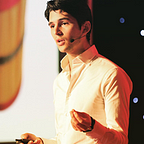Movements, Organizations, and Mobs: the language of action
Taxonomy of social forms, part 2
In a previous post, I put forward 3 definitions for common social forms (communities, networks, and groups) that have become increasingly important to understand as society adapts to the powerful combination of social media, low cost flights, and the take off of 4th Industrial Revolution.
To this already complex landscape, we need to add the challenges of Global Warming, political disenfranchising, economic stagnation, an aging population in rich countries (with ballooning healthcare and pension costs), mass migration, and a growing gap between the rich and the poor (coupled with speculative finance).
One way or another, the coming years will see a major transformation in society. If we are to navigate these changes, a common language won’t hurt.
The social forms we saw in part 1 differ according to shared beliefs and/or trust relationships. Importantly, the members of Groups, Communities, or Networks don’t come together for a common objective but instead find synergies that allow them to satisfy their individual interests. When the primary reason for coming together is a common objective, the social forms that are created are, instead, Organizations, Movements, or Mobs. Of course, these social forms often overlap, here we are looking at the pure definitions…
To dig into these forms, let me borrow the framework from R. Simons, Levers of Control. According to its author, there are 4 main ‘levers’ or types of control that can be used for coordinating: Interactive Controls (power being exercised in regular meetings and unplanned discussions), Boundaries (in the form of ‘thou shalt not…’), Diagnostic Controls (e.g. incentives, rewards for completion of targets, etc.), and Belief System (values, mission, etc.)
As we can see, Organizations (companies, societies, non-for profits, governments, etc.) use all forms. For example, General Electric’s employees have regular meetings where decisions are taken, are not allowed to give company knowledge to competitors, are given a yearly salary bonus if they achieve targets, and share a common objective of maximizing profit and share value (among other things). This variety of tools or ‘levers’ allow for a highly coordinated organization.
On the other hand, Movements and Mobs rely exclusively on the Belief System to influence the actions of its members, to the point that it becomes their defining characteristic. Movements have the purpose of advancing a particular new way of doing or of being, a new vision of how a particular thing (discipline, society, etc.) should be, or said otherwise, a ‘positive’ goal. For example, Feminism advances the idea of a society where women and men are given equal rights, freedoms, and privileges.
On the other hand, Mobs are created from (and for) ‘negative goals’ (a desire for change). The Arab Spring is an excellent example where a Mob came together to fight the political oppression. As the ‘negative’ goal of taking down the previous regimes was achieved, the different factions couldn’t agree on a shared vision for what the new order would be. Fragmentation and power struggles followed.
When a group starts to coordinate its actions, it becomes either a Mob, a Movement, or an Organization. The degree to which formal power structures and (positive or negative) common objectives are defined will dictate which form it takes and how resilient it is.
References:
Special thanks to John Egan who first lighted my interest on this distinction, and Edward Sapernia who gave me the “positive/negative goal” wording.
Lewicki, R., B. B. Bunker. 1996. Developing and maintaining trust in work relationships. R. M.
Kramer and T. R. Tyler, eds. Trust in Organizations: Frontiers of Theory and Research. Sage Publications, Thousand Oaks, CA, 114–139
